
Aari Zardozi Hand Embroidery
- Introduction
- Tools and Raw materials
- Making Process
- Products
- Contact Details
Ahmedabad is located on the banks of Sabarmati River. It is the largest city of Gujarat and has witnessed the rule of many dynasties, right from the Sultanate and Mughal rule to Maratha and British rule. There is a remarkable tale associated with the Ahmedabad city. At the beginning of fifteenth century, the Muslim Muzaffarid dynasty was ruling the Gujarat state. Once king Sultan Ahmed Shah was standing and enjoying the beautiful sight of River Sabarmati and he observed a small hare chasing a big ferocious dog. He keeps on thinking about that incident and he approached a spiritual leader for explanation. Then he explained that it is the individuality of this holy land, which develops such rare qualities in its people. The king Sultan got so impressed with the uniqueness of this land and set up the capital of Gujarat on 4th march 1411, hence the name Ahmedabad. Where as in 1960s, the capital changed to the well planned city of Gandhinagar. River Sabarmati divided Ahmedabad in to eastern and western regions. Ahmedabad has developed as one of the important centers of trade and textile manufacturing and it is the second largest cotton producer in India.
Aari Zardozi is a form of embroidery, originated from Persia where as “zar” means gold and “dozi” means embroidery. Mughal conquerors introduced this heavy and unique style of hand embroidery to India. In the Mughal era, Aari Zardozi works were used to decorate tent walls in the form of wall-hangings as well as an accessories for royal elephants and horses. Various styles of hand embroideries are handed down from generation to generation. Aari Zardozi works differs from other traditional embroideries like Chikankari, Sujni, Kantha, Kasuti, Toda and Mirror embroidery etc. The Muslim communities residing in India initially executed Aari Zardozi work. These Aari Zardozi designs varies from place to place.
Artisan Mr.Shahid Ansari from Ahmedabad, who got this unique skill from his forefathers, practices from past 22 years. Previously he was making zardozi designs for bridal collections and also for some showroom order works later on the invention of Computer designs and machine embroidery affected much on these craft people. Then he thought to give new vision to Aari zardozi artwork and he started to make embroidery of famous monuments of India.
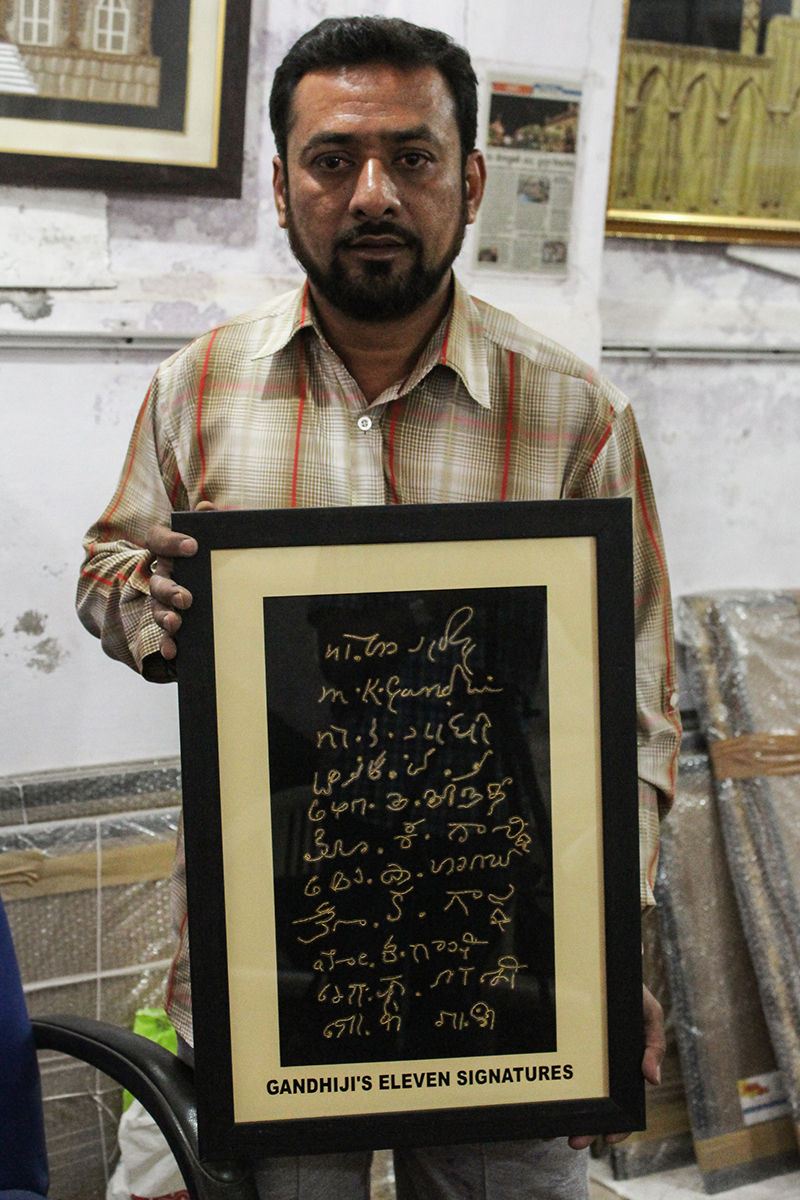
Mr.Shahid Ansari showing one of his best works, which shows the eleven signatures of Mahatma Gandhiji.
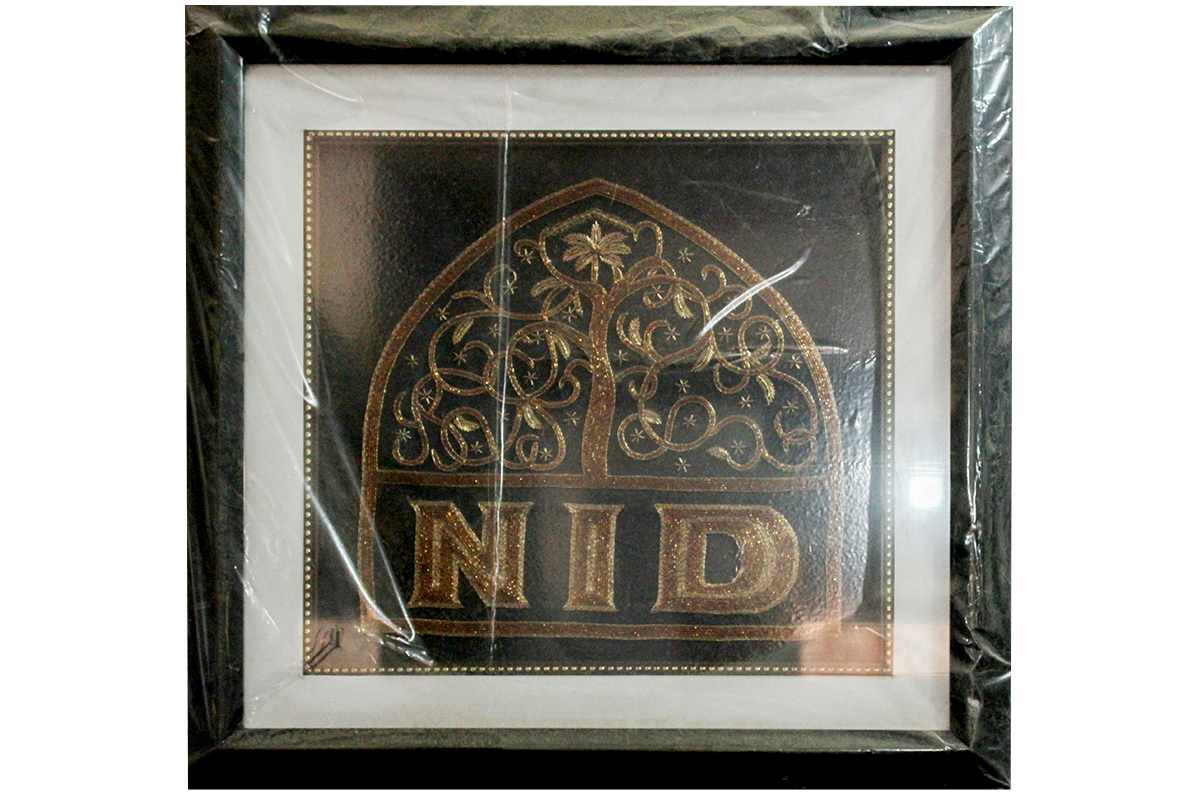
Aari and zardosi hand embroidery portrays NID (National Institute of Design).
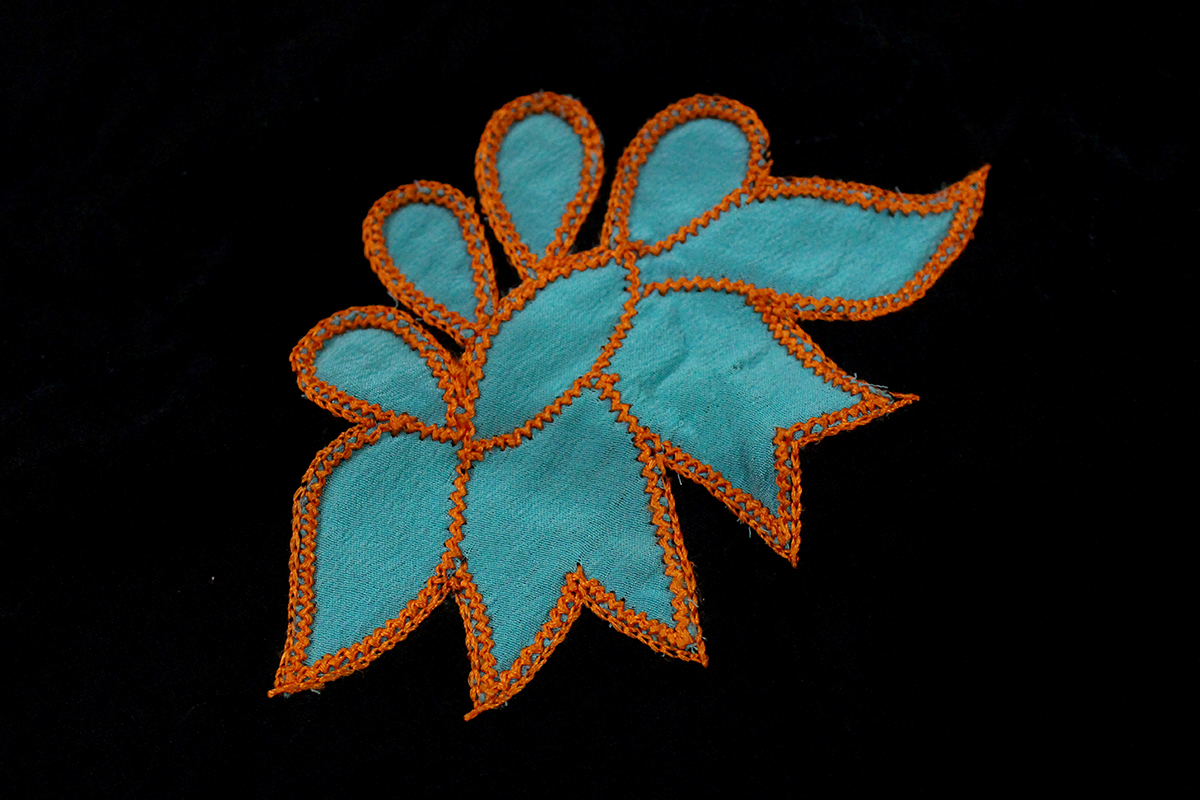
Simple hand embroidery of flower with unique colour combination.
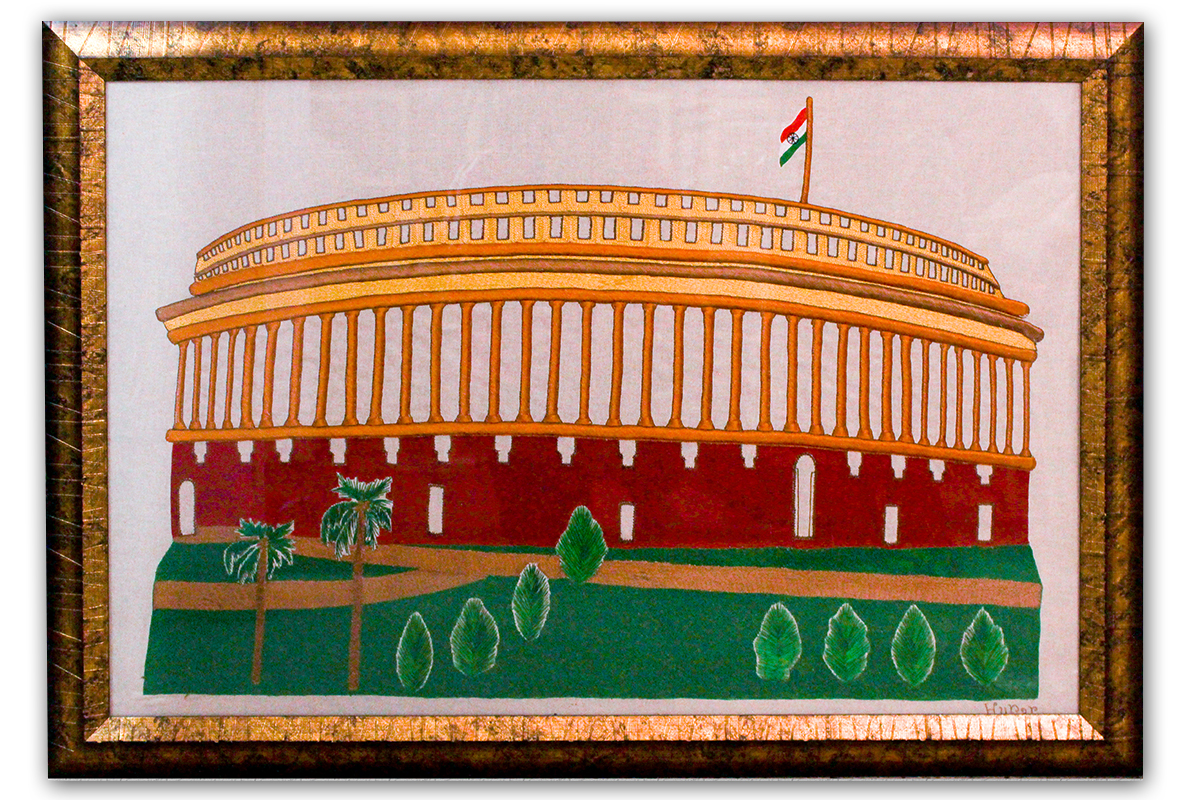
Detailed hand embroidery, which signifies the Parliament of India.
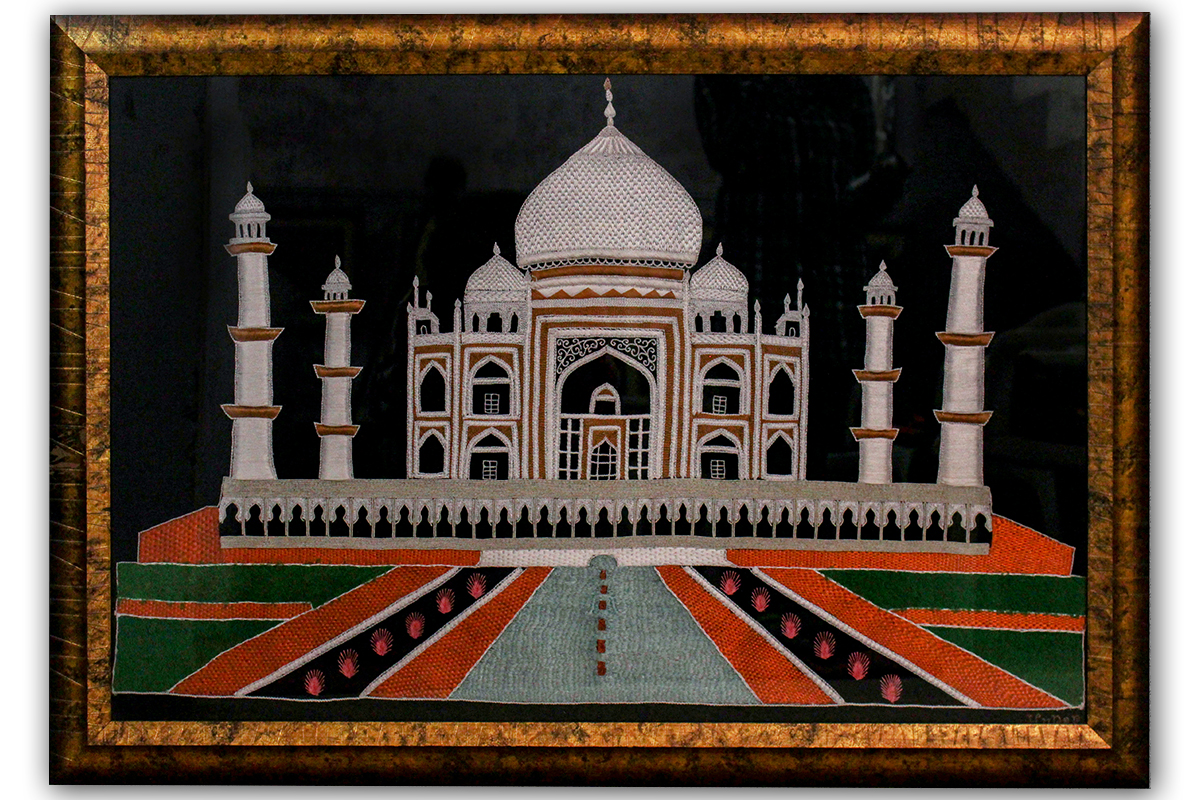
Taj Mahal, one of the seven wonders of the world.
Round wooden frame – to fix the plain cloth for stiffness.
Aari (needle) – sharp hook shaped needle used to embroider the fabric.
Silk thread – a basic material for hand embroidery.
Fabric – Cotton velvet cloth is used to embroider the required design.
Sequin Beads – used to enhance the design.
Tailor’s chalk – to draw designs on framed fabric.
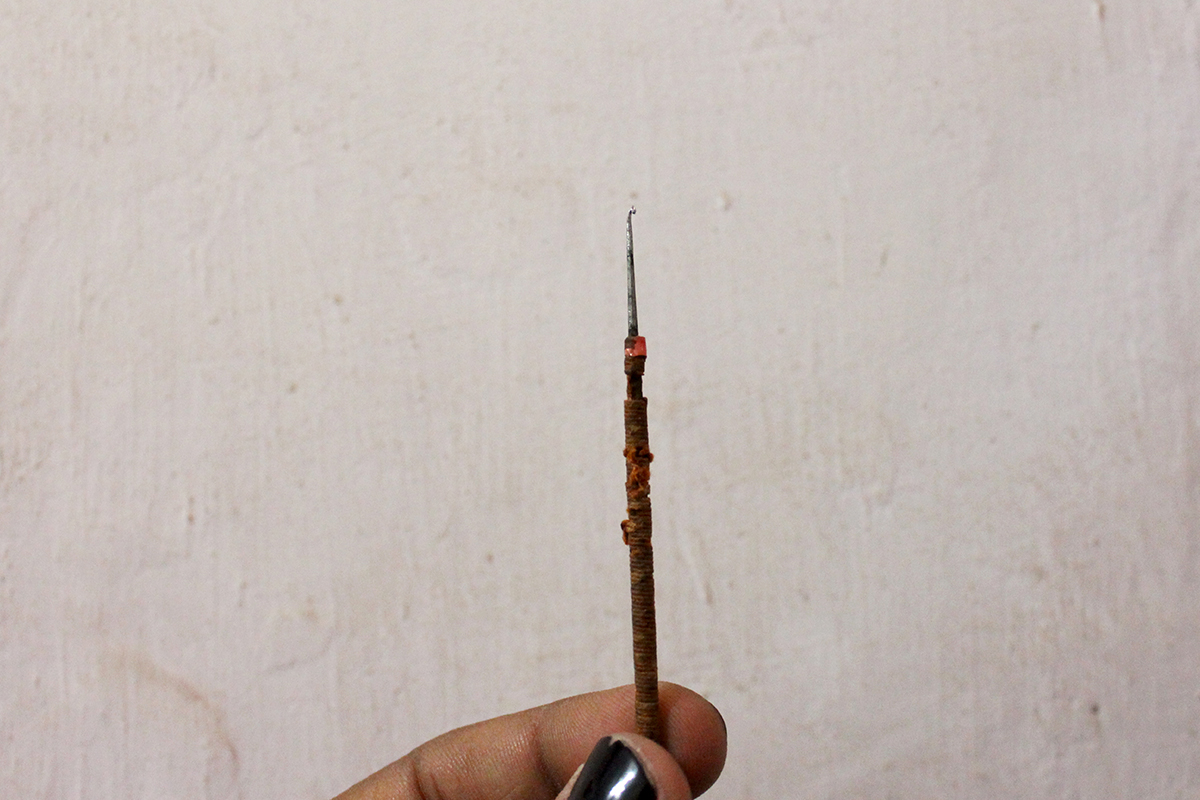
Aari (needle), shaped like a hook at the tip used to embroider.
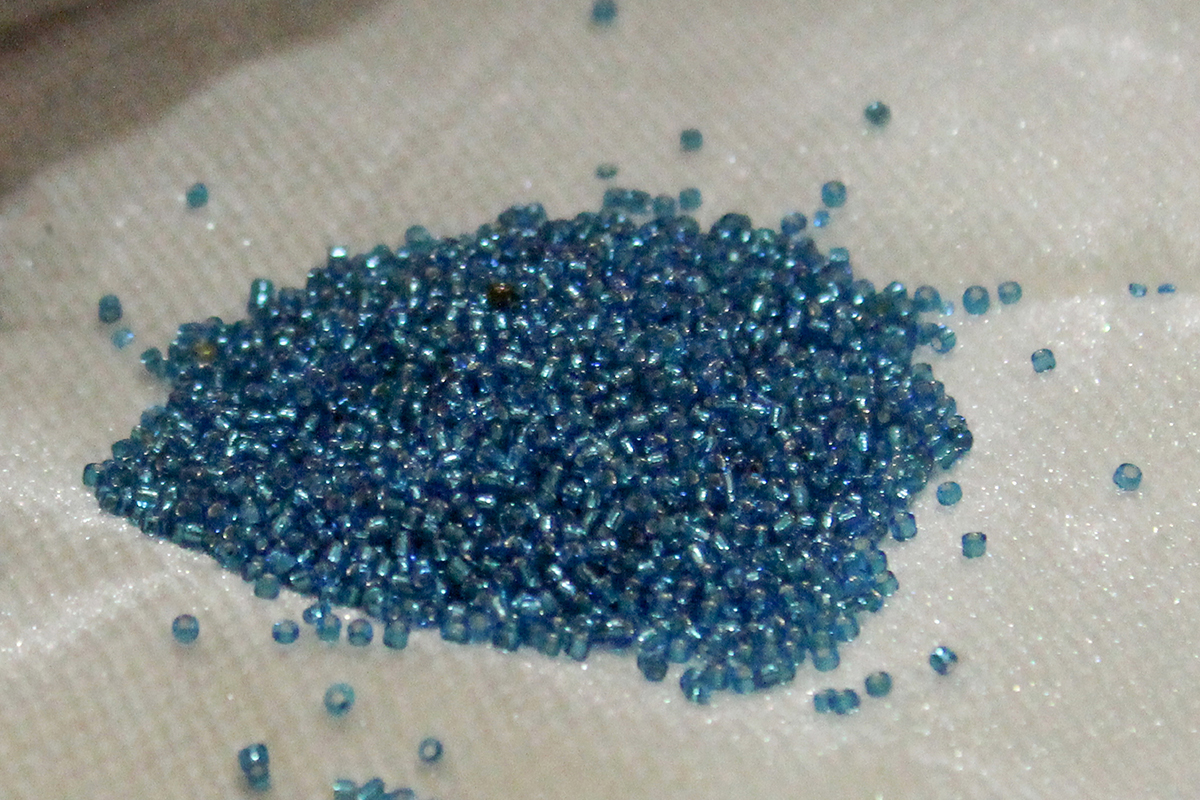
Sequin beads are used to enhance the embroidery work.
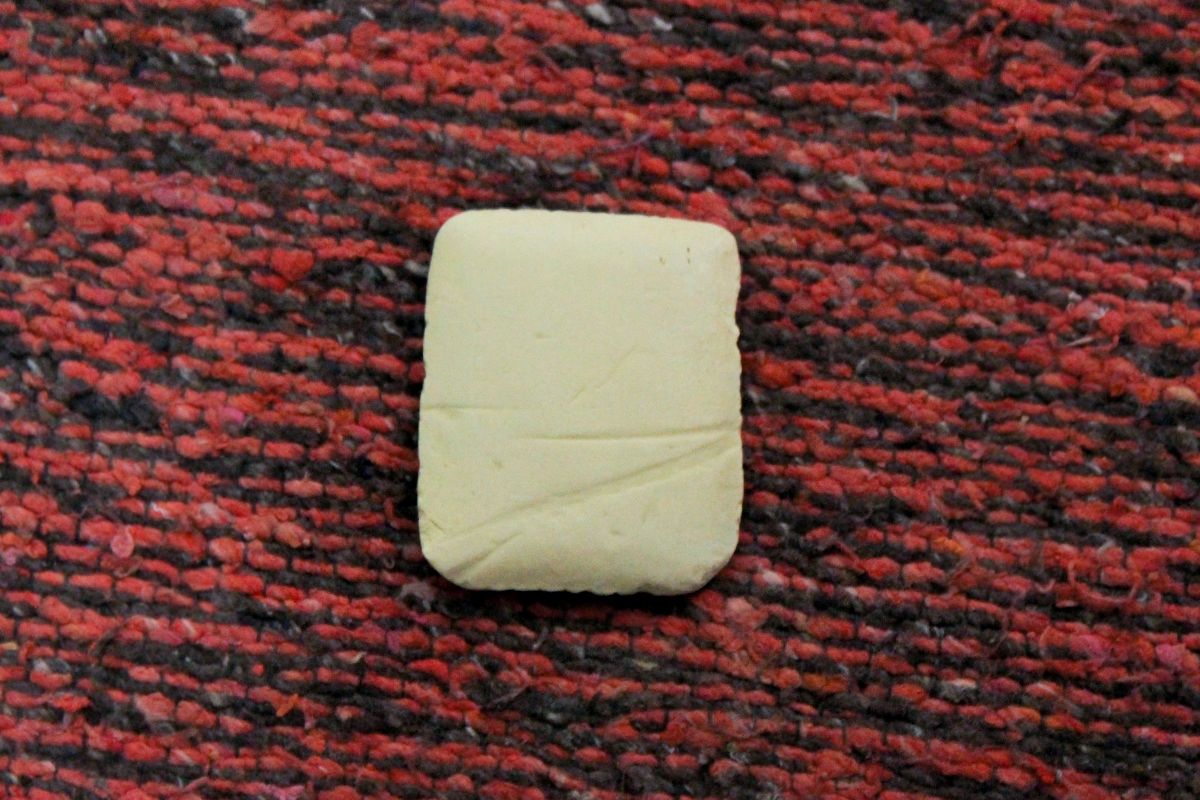
Tailor’s chalk is used to make temporary markings on fabric.
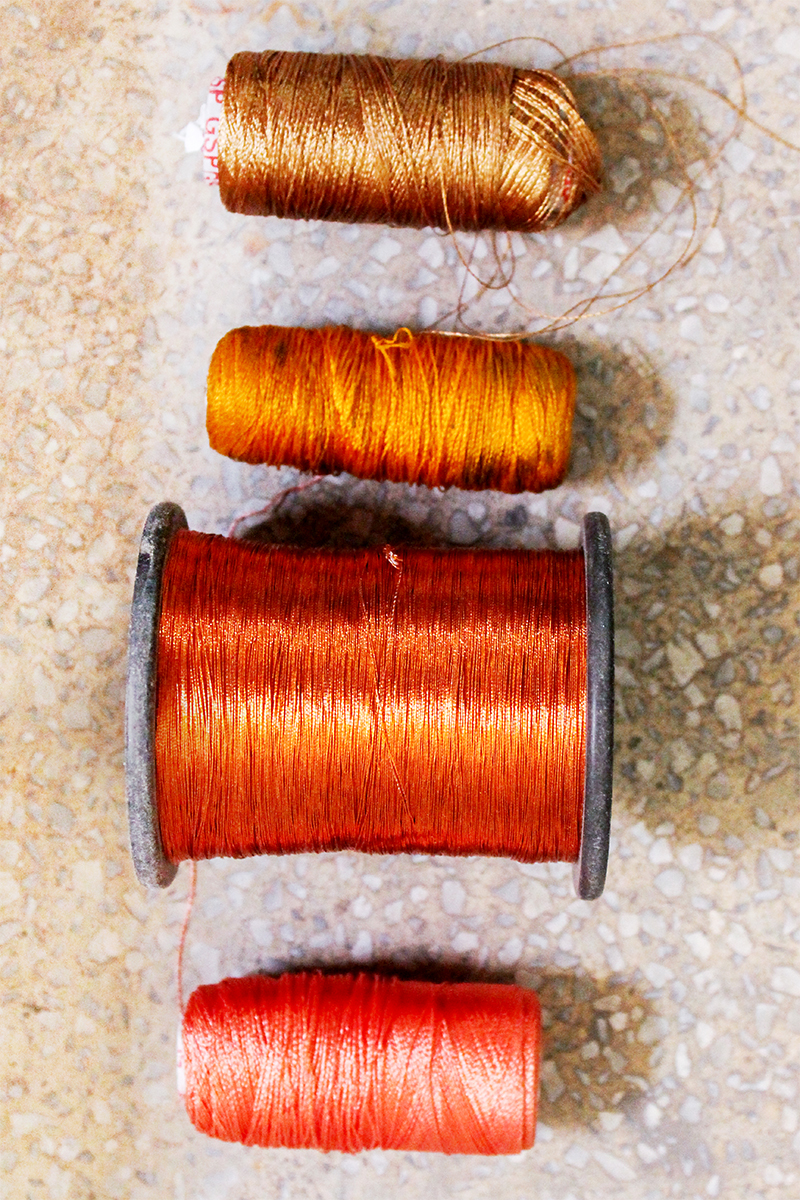
Silk treads are used for Aari zardosi hand embroidery.

Round wooden frame is used to fix the basic cloth for stiffness.
Aari zardozi is purely a hand embroidery that involves the decoration of fabric with needle, colourful yarn, pearls, beads, quills and sequins etc. The passion of hand embroidery led to great experimentation with numerous styles and designs. The actual zardozi embroidery was done with pure thin gold and silver wires. In ancient times artisans were using real gold thread for embroidering the fabric. There are three types of zari such as real zari which is made of real gold and silver, imitation zari made of silver coated copper wire and metallic zari that is made of polyester metallised film. Now these gold and silver wires are replaced with silk threads but the art remains the same. Aari Zardozi work involves the application of an aplenty of beads using needle which is shaped like a hook at the tip.
The tools consist of Aari hooks, round wooden frame, silk threads, sequin beads and basic cloth. Initially the plain fabric that has to be embroidered is framed tightly to the round wooden frame. Most of the artisans prefers silk or locally made satin (gajji) and cotton velvet for Aari Zardozi according to the requirement and the purpose. Once this has been done, the required patterns or designs are created directly on the fabric with the tailor’s chalk. At the beginning artisan starts with the usual Aari chain stitch. Aari zardozi stitches are done by holding the thread with a finger at the reverse of the framed fabric and Aari hook, a sharp pointed awl-like needle, is held on the top. Artisan starts embroidering the outline of the design and then Aari hook is pierced through the cloth to pull up the thread from the backside of the framed cloth to tighten the previous stitch. Different varieties of hooks are used to embroider the fabric according to the design and thickness of the cloth. These stitches are much similar to the cobbler’s stitch and the process of embroidering is repeated until the required design is formed on the surface of the fabric. Finally sequin beads are stitched by picking the beads using aari hook and then stitched to enrich the artwork.
Flow Chart
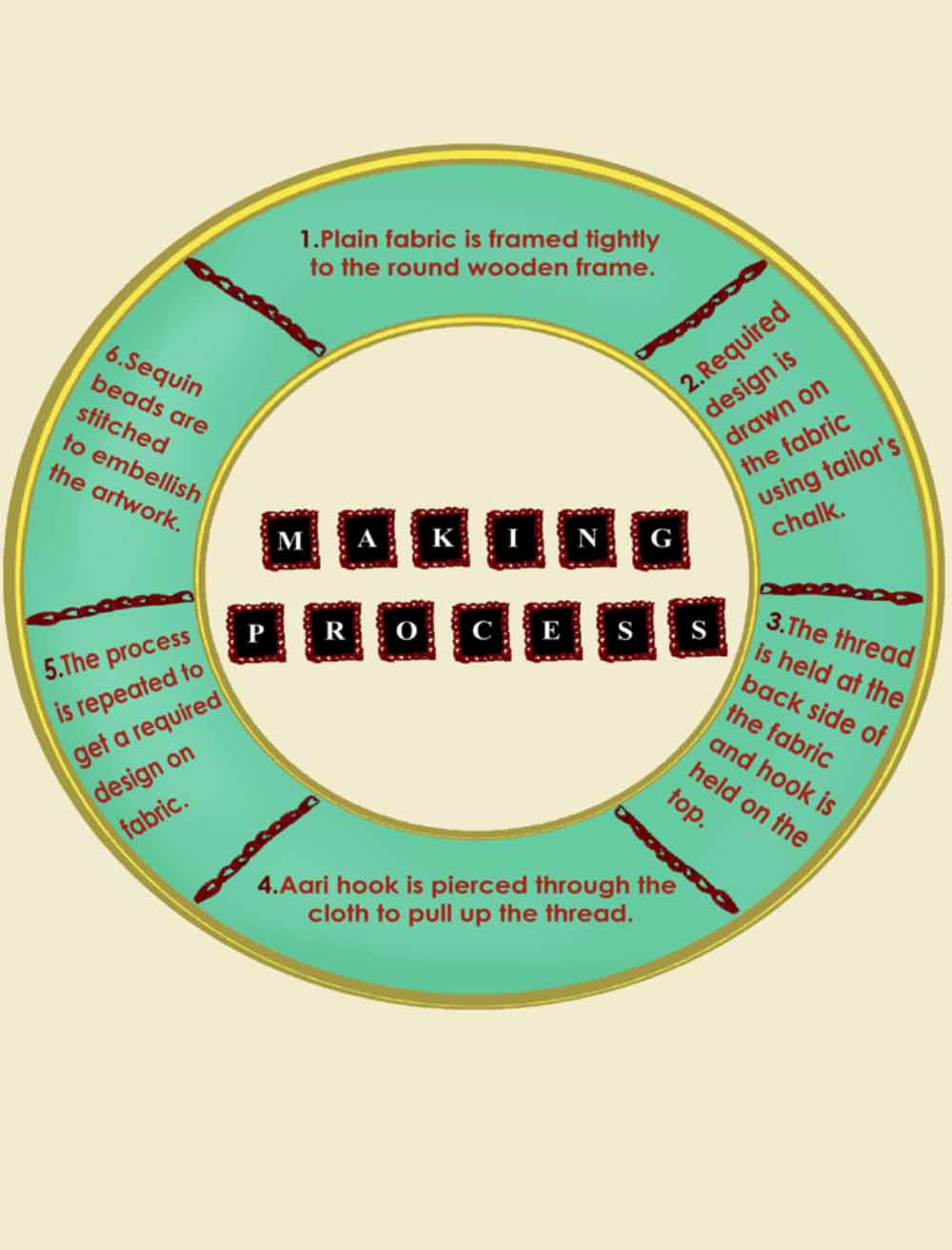
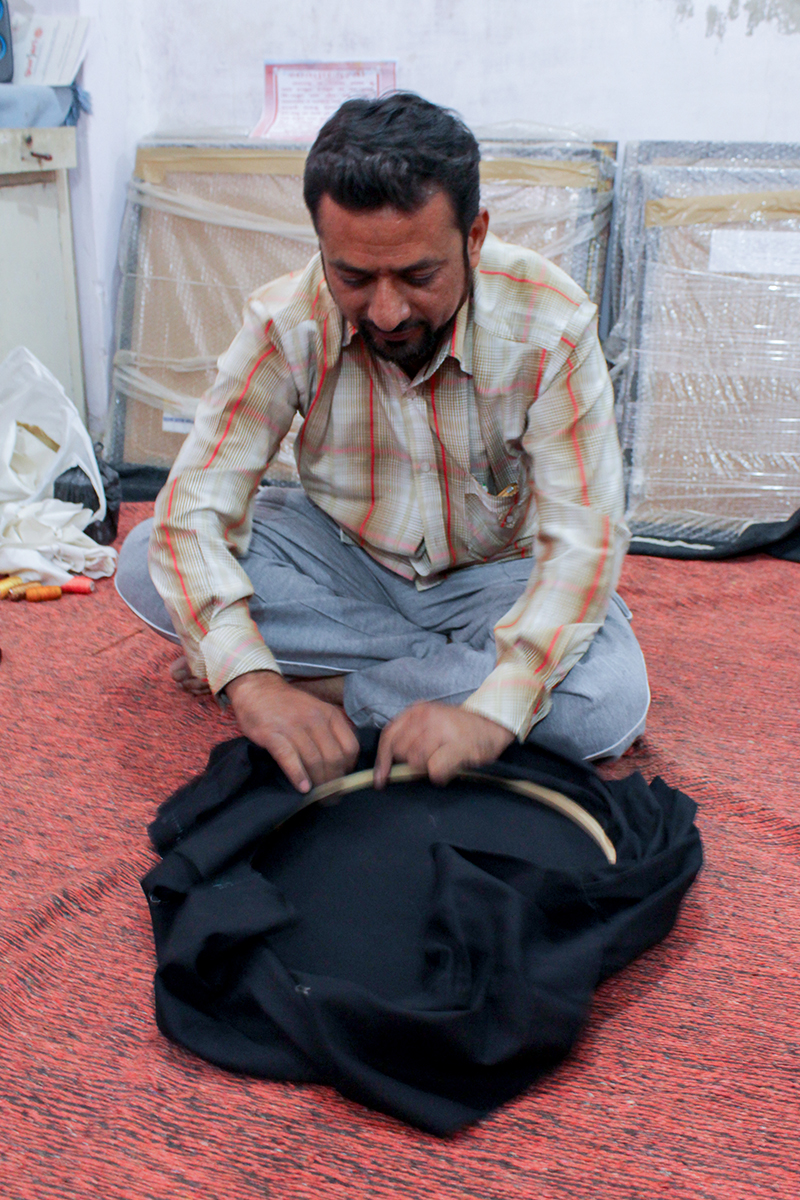
Artisan attaching fabric to the round wooden frame.
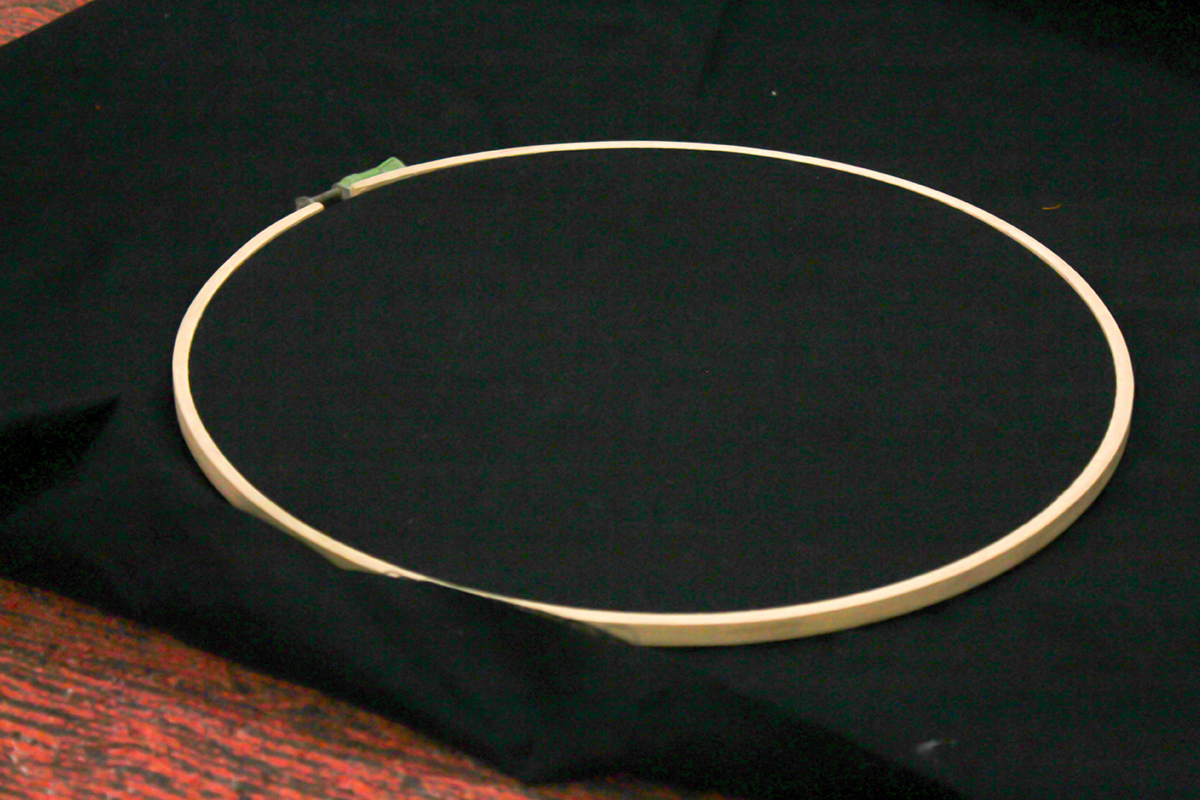
Black colour fabric is fixed to the round wooden frame.
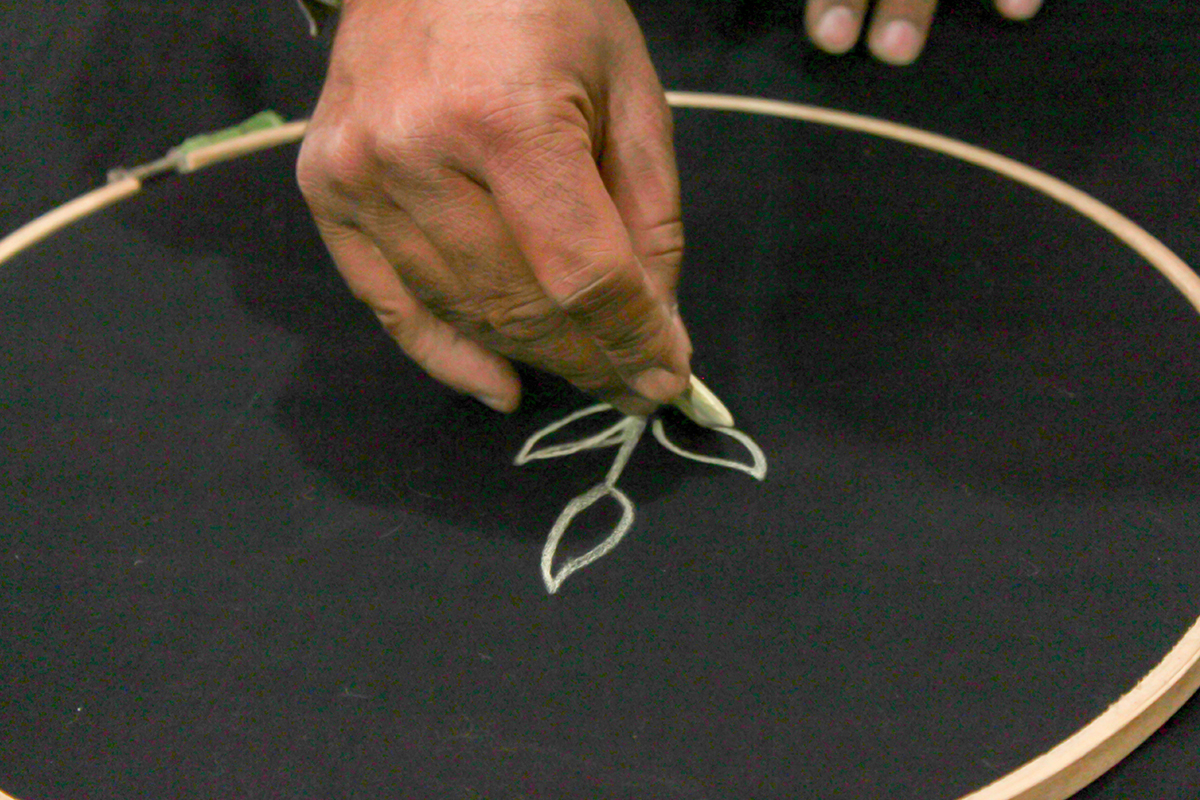
Required design or pattern is drawn on the fabric.
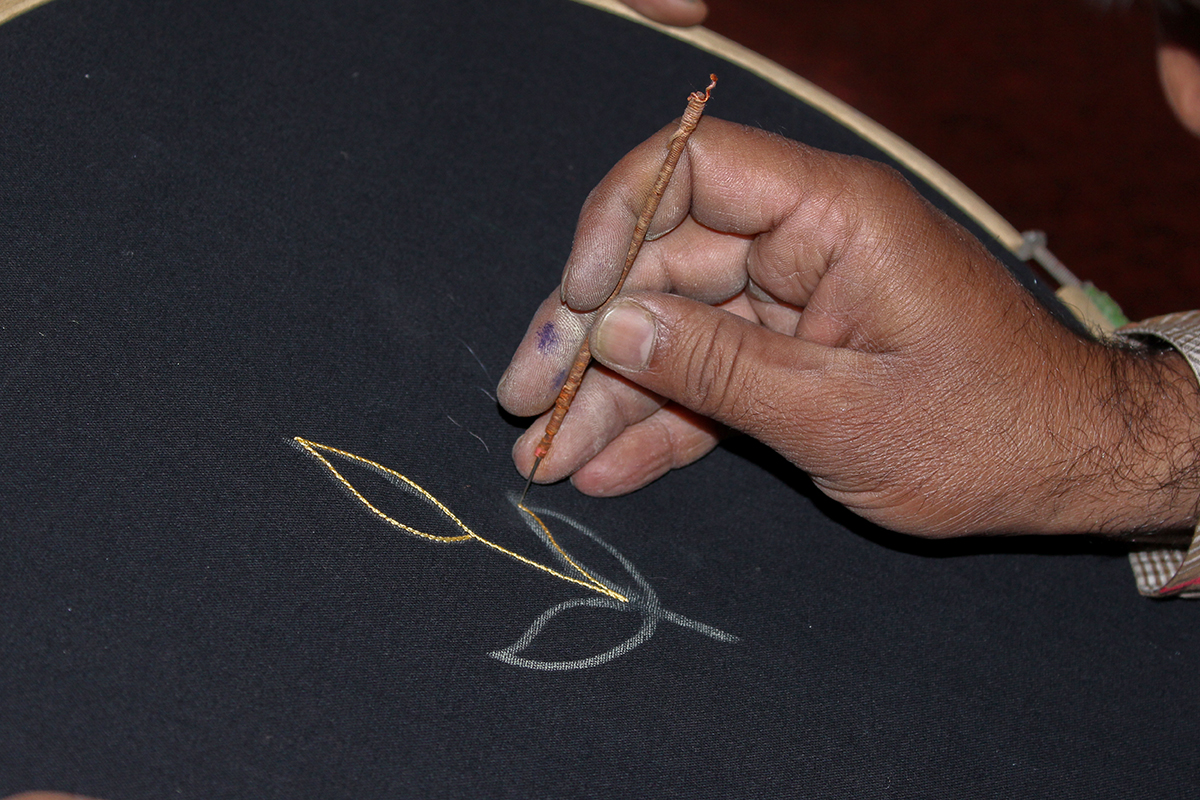
Silk thread is pierced through the fabric.
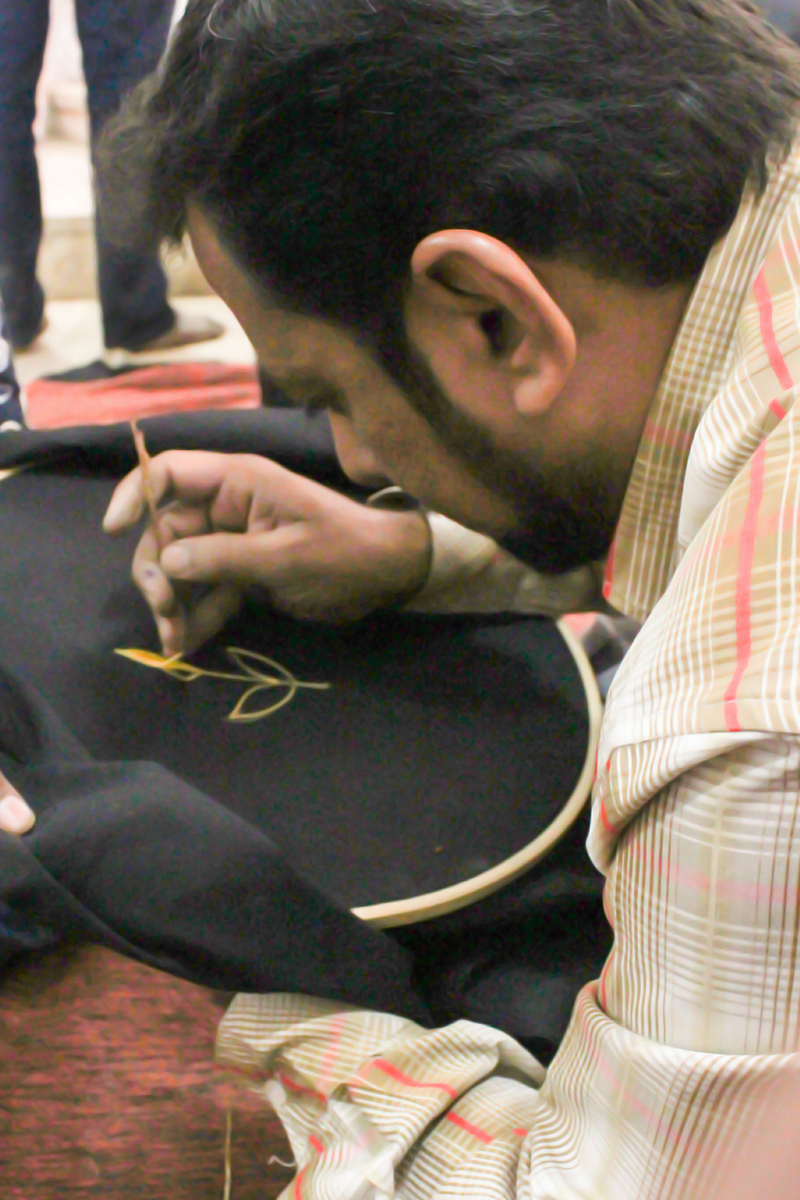
The silk thread is held with a finger and carried to the upper side to secure the previous stitch.
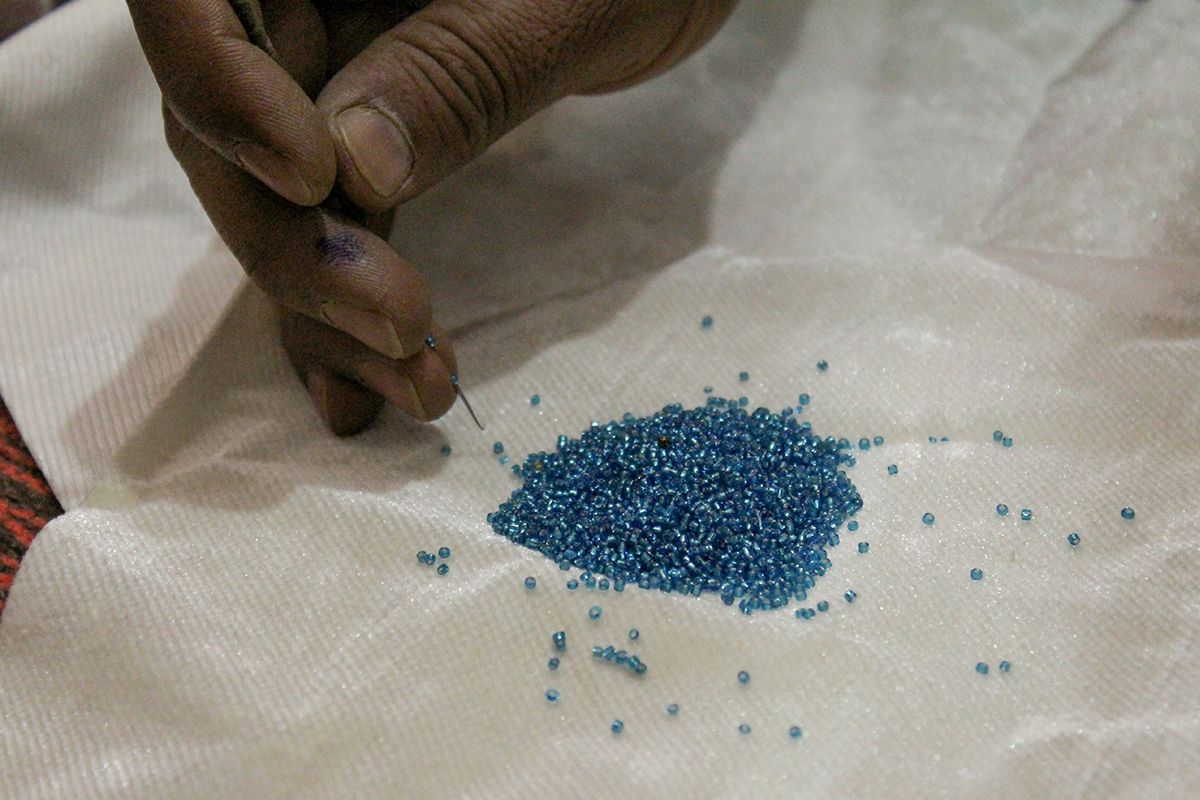
Seed beads are picked through the Aari hook.
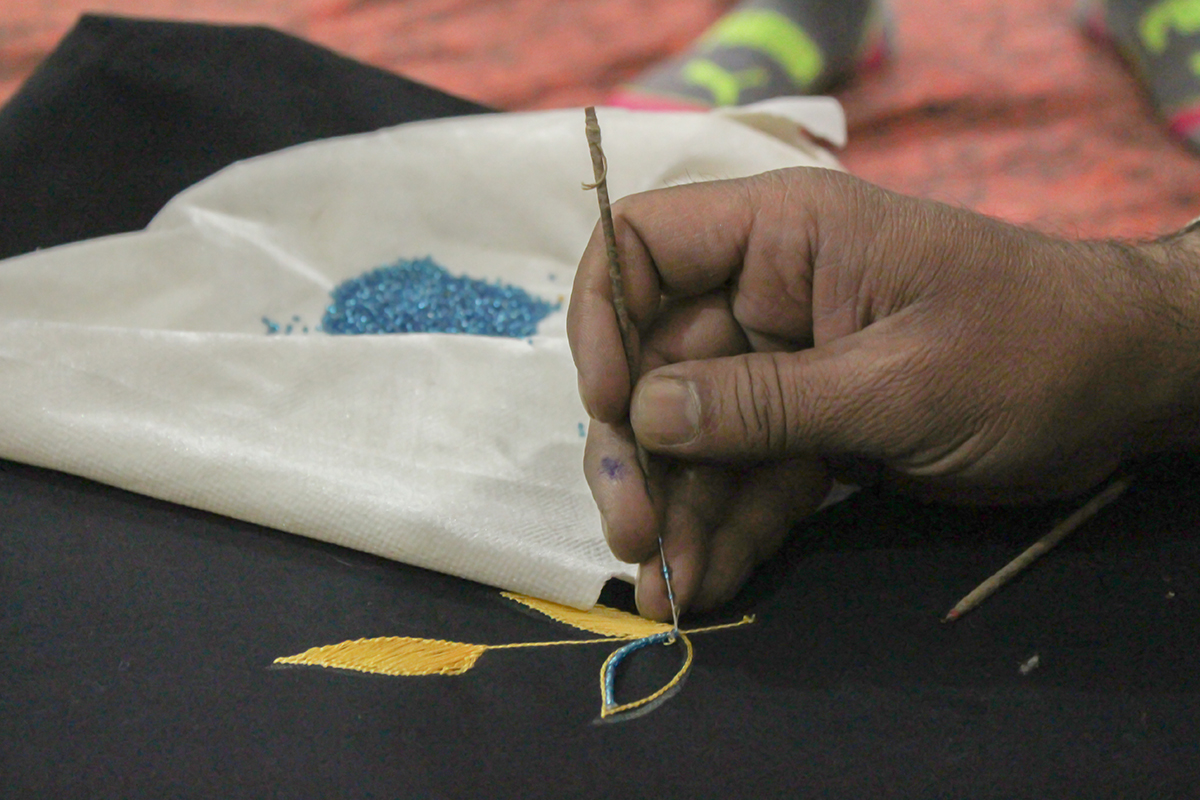
Adding the beads to give a regal effect.
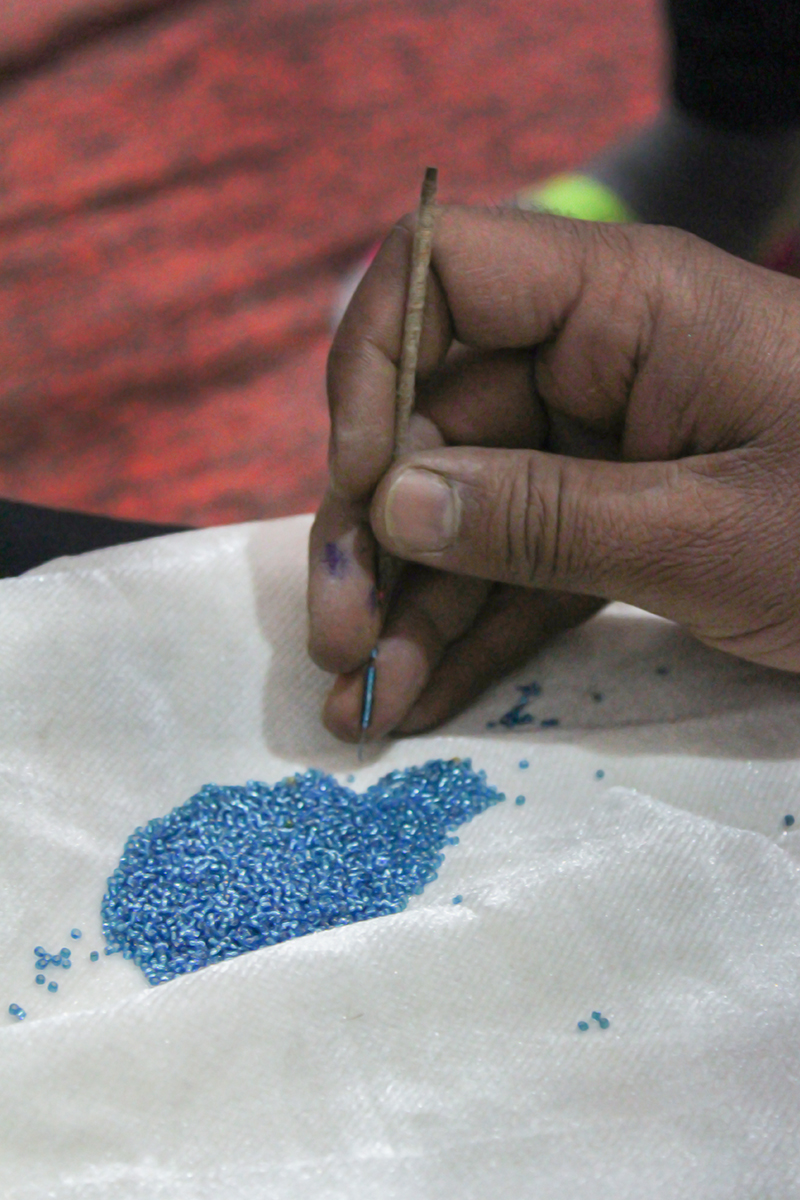
A fine Aari hook and thread is used to make chain stitches with beads.
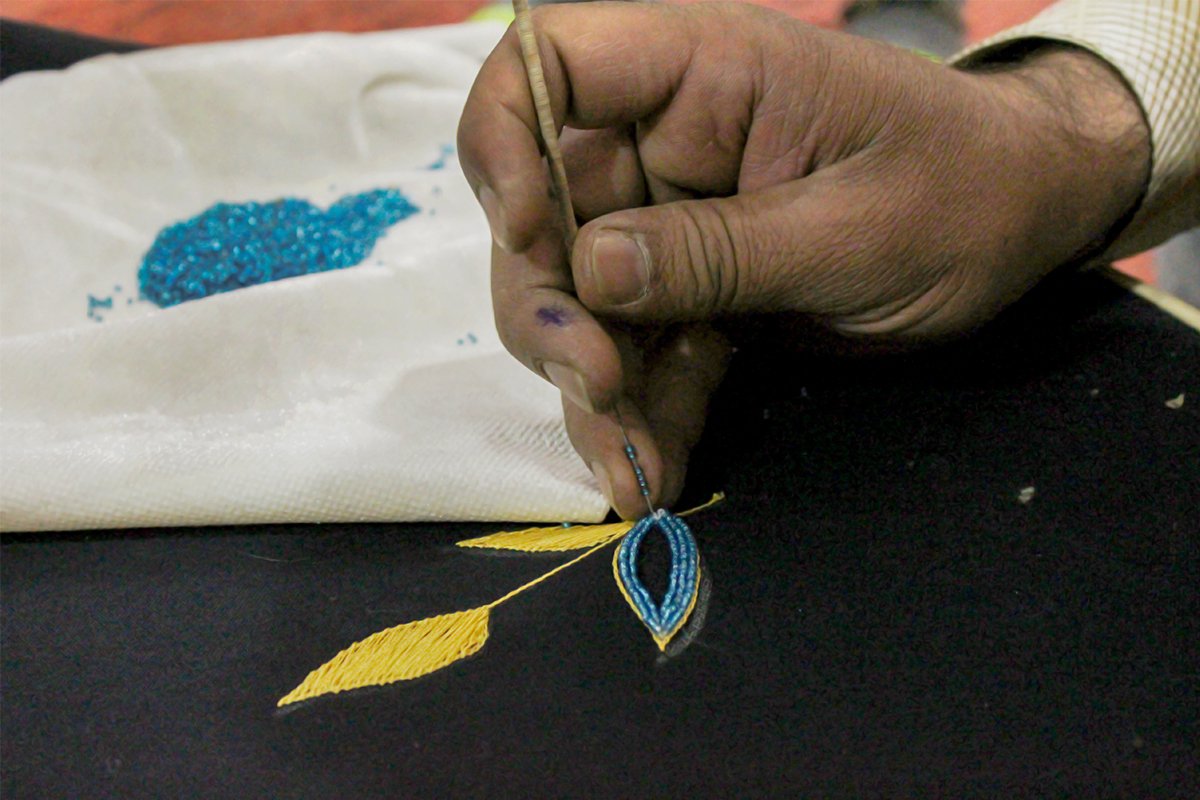
Artisan enhancing the embroidery by adding beads.
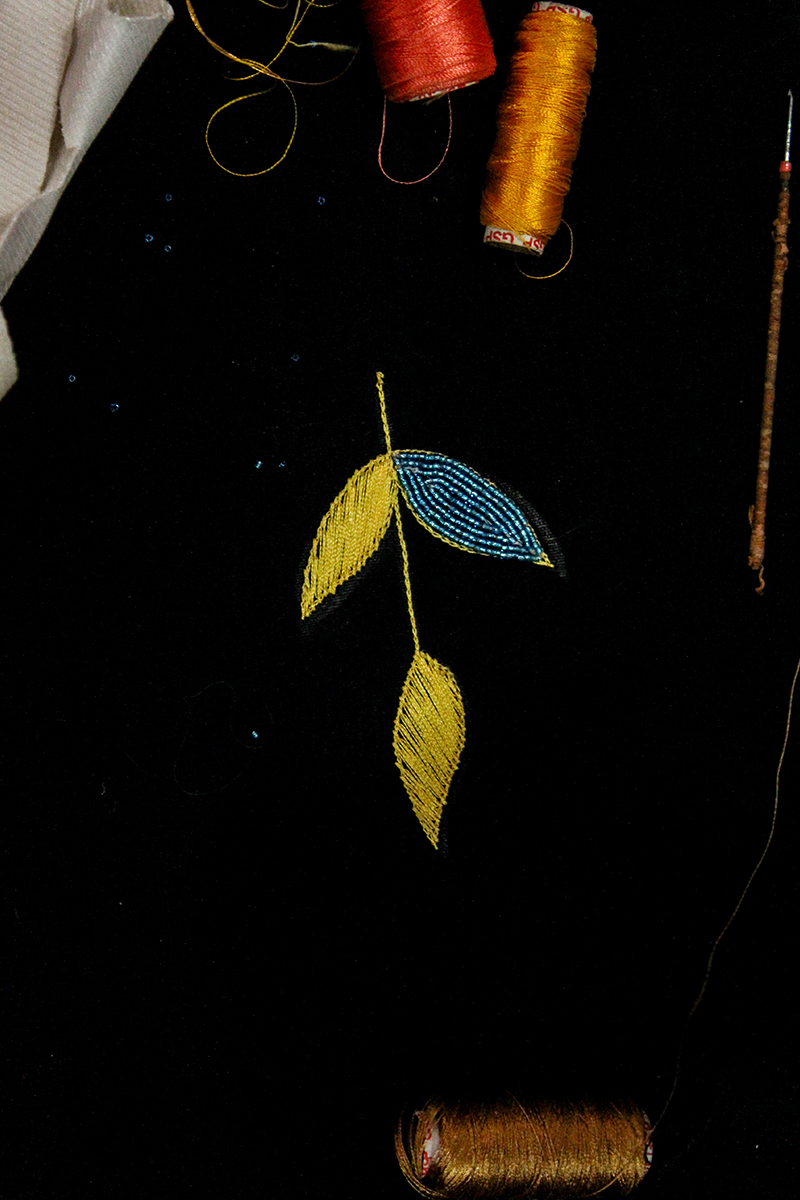
Aari zardosi hand embroidery.
Indian Aari Zardozi has made its own recognition in the world. These zardozi works are expensive types of embroidery because of the fabric and materials used. Mr.Shahid Ansari from Ahmedabad, a well-known artisan who has experience of 22 years and famous for his unique style of working with Aari Zardozi. He believes that these monuments are heritage as well as Aari Zardozi so he combined together in his artwork. He captured famous Monuments of India in his artwork by giving a traditional Aari Zardozi attire. From past three to four years he did 40 artworks using 50 different types of techniques. ‘Wheel of life’ (Gandhiji’s Satyagraha) and ‘Eleven signatures of Gandhiji’ are the most famous Aari Zardozi artworks made of real gold threads. The price for the artwork starts from INR15,000 to a lakh.
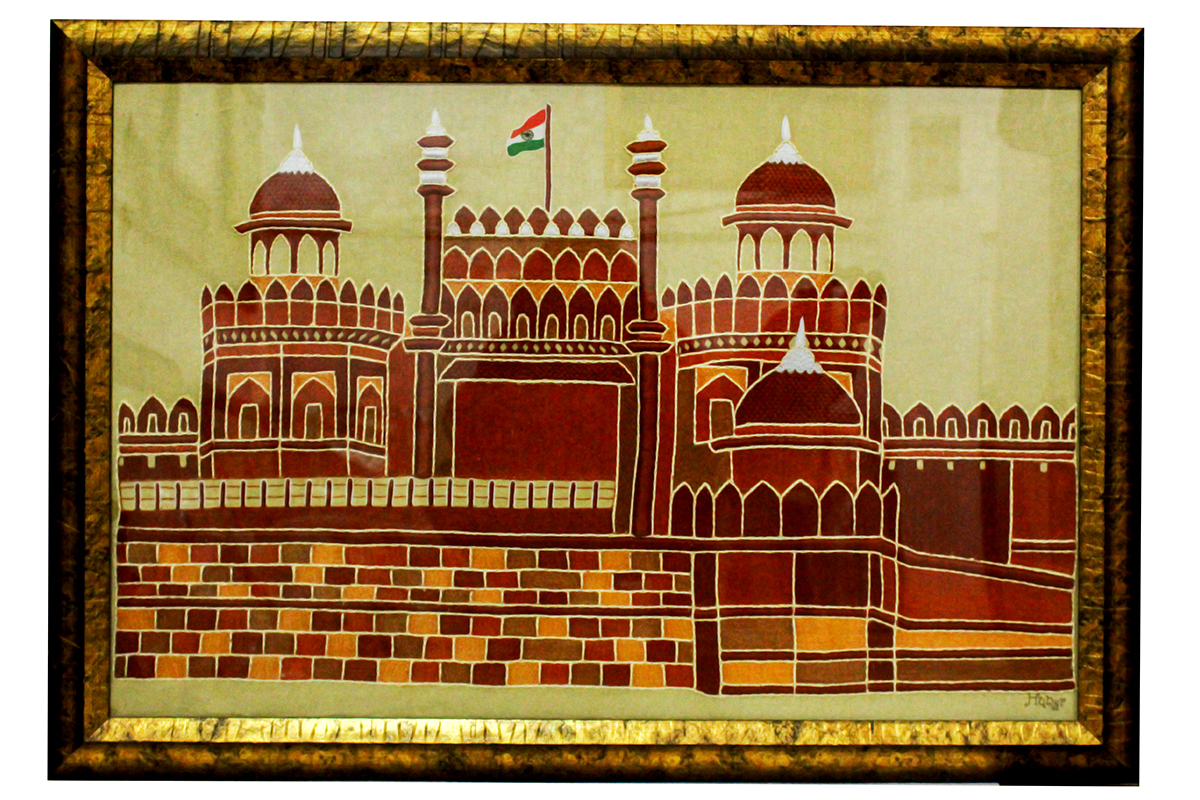
Aari hand embroidery of Red fort, Delhi.
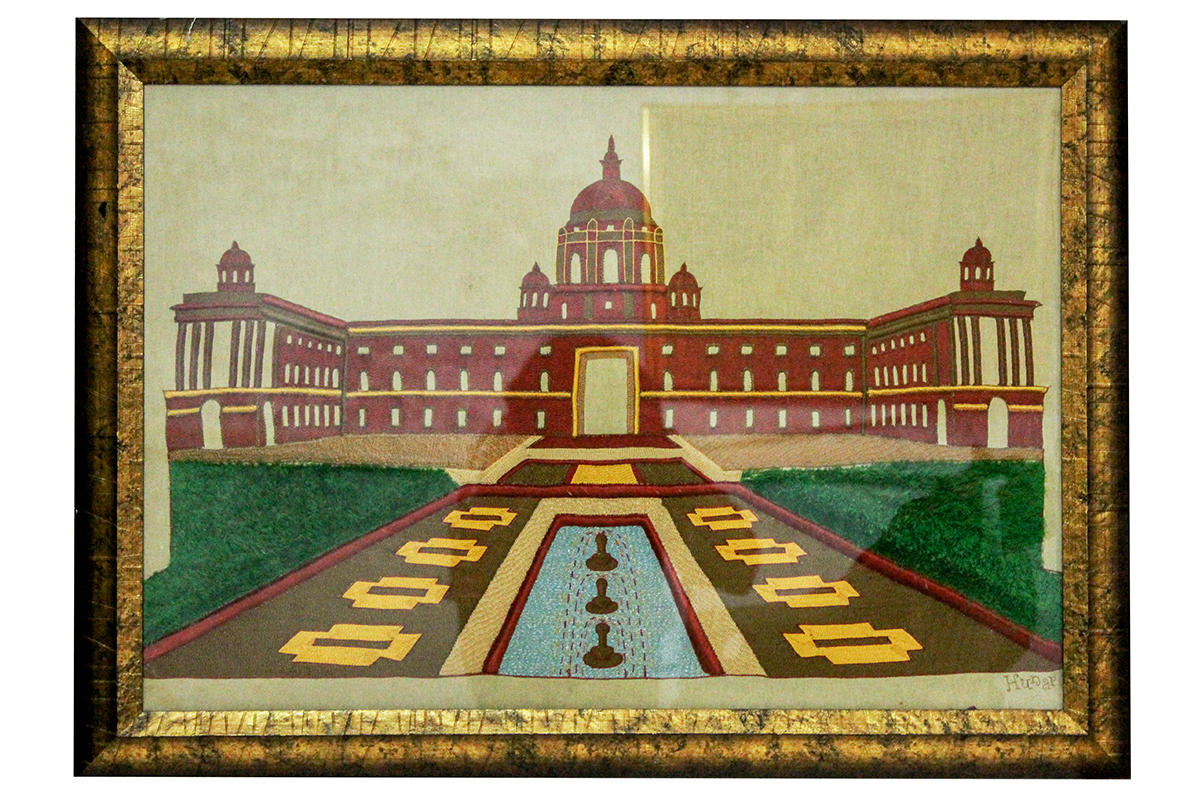
Hand embroidery, which shows the scenic architecture of Rashtrapati bhavan.
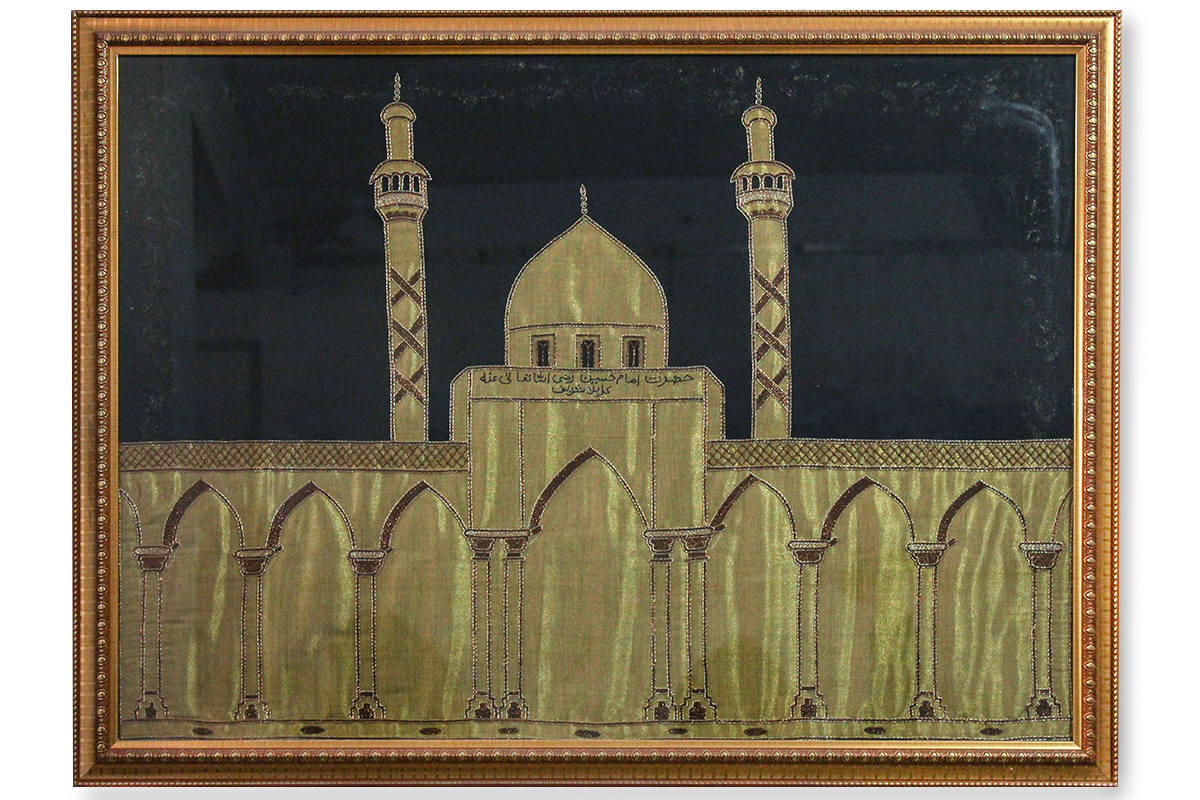
Jama Masjid (Jama Mosque) of New Delhi, a holy place for Muslim devotees.

Wheel of Life, created by Mr.Vinobaji to explain the principles of Gandhiji’s Satyagraha.
This documentation was done by Professor Bibhudutta Baral and Ranjitha M. C. at NID, Bengaluru.
You can get in touch with him at bibhudutta[at]nid.edu
You could write to the following address regarding suggestions and clarifications:
Artist and Tailor:
Ms. Rani
Vellore, TN
India
Mobile: 09597223567
Helpdesk Details:
Co-ordinator
Project e-kalpa
R & D Campus
National Institute of Design
#12 HMT Link Road, Off Tumkur Road
Bengaluru 560 022
India
Phone: +91 80 2357 9054
Fax: +91 80 23373086
Email: dsource.in[at]gmail.com
Documentation By
Dr. Bibhudutta Baral
Ranjitha M C
Photography
Harsha Kumar N L
Sandhya B
Videography
Harsha Kulkarni
Aakash Sharma
Manasa K H
Ranjitha M C
Amulya S
Field Research Team
Harsha Kulkarni
Aakash Sharma
Harsha Kumar N L
Manasa K H
Ranjitha M C
Amulya S
Sandhya B
Project Head/Credits
Dr.Baral, Project Head
Email:bibhudutta@nid.edu
Mobile# +91 97397 18577
Key Contacts
Shri Shahid Hussain, Proprietor and Senior Artist
Hunar Arts & Crafts
Ahmedabad
Gujarat
Cellphone: - 09898542331



